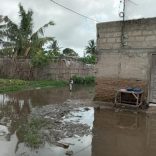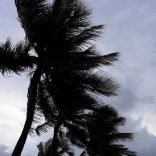Mozambique: Matola City Council plans to remove buildings from water retention basins - report
“Mozambican meteorological service did a good job” says WMO Secretary-General

photo: ECMWF
The Secretary-General of the World Meteorological Organization (WMO) has told Lusa that the Mozambican meteorological service did “a good job” in forecasting Cyclone Idai and issuing warnings, but that means to evacuate areas at risk were insufficient.
Speaking at UN headquarters in New York, Petteri Taalas told Lusa that the “Mozambican meteorological service was doing a good job” in issuing a correct forecast about Cyclone Idai, which struck Mozambique on March 14.
The WMO Secretary-General compared Cyclone Idai in Mozambique with Hurricane Harvey in Texas in August 2017, both classified as category 4 on a scale of 1 to 5. The death toll in Texas was 82, while in Mozambique the most recent estimates are 468 dead.
“In both cases there were warnings,” Taalas said, but the population of Mozambique was not able to withdraw from the areas of risk. “The means to remove millions of people in Mozambique did not exist,” while in Texas, people “could hop into private vehicles and get out of the risk areas”.
According to Taalas, the WMO hopes to increase cooperation with Mozambique and other less developed countries in the area of prevention and early warning, the World Meteorological Organization serving as a platform for the exchange of resources between the most developed and less developed countries.
“It is difficult to say whether [Cyclone Idai] was related to climate change” and the long-lasting human action on the environment, as the cyclone brought together elements [of weather patterns] that have changed over the years, Taalas said.
Taalas underlined that climate change was responsible for the rising temperature of the air and ocean waters around the world, and that this “gives hurricanes, cyclones and typhoons more energy”.
There was “a greater number of more devastating tropical storms” because of “hot oceans”, the WMO secretary-general said. Another consequence of the rise in temperature, he went on, was greater humidity in the atmosphere from evaporation, exacerbating flooding.
“It is very likely that there was a climate change component behind the event,” Taalas concluded, but only in the future would it be possible to say exactly what the changes had contributed to the phenomenon.












Leave a Reply
Be the First to Comment!
You must be logged in to post a comment.
You must be logged in to post a comment.